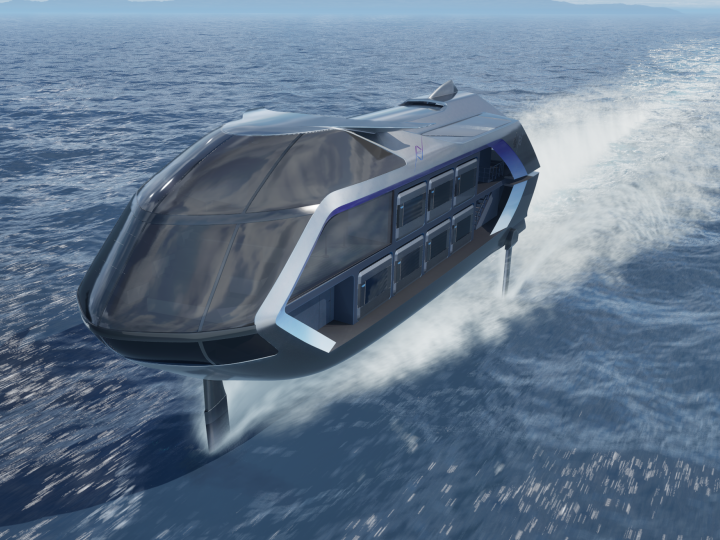Passenger Hydrofoil with Fully-Submerged Foils: Kawasaki’s JETFOIL
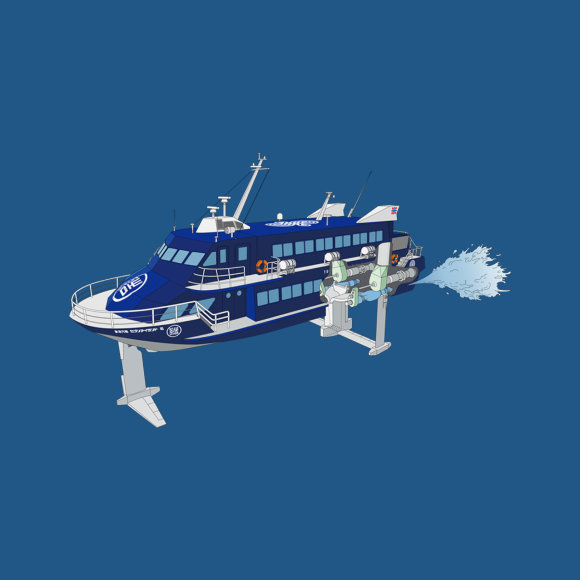
The ultra-high-speed passenger ship travels at up to 45 knots per hour, and this “flying ship” is crucial for transport to and from remote islands. How does it achieve such great velocity and stability?
Kawasaki Produces JETFOIL - Vital for Remote Islands - for the First Time in 25 Years
The JETFOIL, a type of passenger hydrofoil with fully-submerged foils, is considered essential for traveling to and from remote islands. Powered by gas turbine engines, waterjet propulsors (pumps) draw in and then discharge seawater, generating lift by means of a set of fully-submerged forward and aft foils, thereby raising the hull above the water’s surface. Achieving a maximum speed of 45 knots (83 km/h), it cruises stably even in rough seas with wave heights as much as 3.5 m. It certainly deserves to be called a “flying ship.” A hydrofoil with fully-submerged foils was originally developed by The Boeing Company of the U.S. in an effort to apply aerospace technology to marine products.
In 1974, a passenger-carrying hydrofoil was launched, which was named “JETFOIL,” as it resembled a jet with sharp, leaf-like wings. In 1987, Kawasaki acquired the manufacturing and sales licenses from Boeing, and 15 units were manufactured in Japan between 1989 and 1995.
A quarter-century later, a new JETFOIL was produced and delivered at the end of June to Tokai Kisen Co., Ltd., a Japanese maritime transport company. This 241-passenger ship, which was christened Seven Islands Yui (“yui” means “to knot, to connect”), has replaced the 36-year-old Seven Islands Niji (“rainbow”). The JETFOIL connects Tokyo and Oshima Island in an hour and 45 minutes, a trip which takes six hours on large passenger ships, marking a new chapter in its history.
The Propulsion System - JETFOIL’s “Heart”
JETFOIL’s propulsion system is comprised of two gas turbines, installed on the port and starboard sides, reduction gearboxes, and waterjet propulsors. More specifically, it is equipped with Rolls-Royce-produced gas turbines with an output of 2,794 kW each, Kawasaki Powerjet 20 waterjet propulsors that achieve 2,060 rpm, and reduction gearboxes that transfer the turbines’ rotational force to the propulsors. These elements work together to draw in seawater and then discharge it at high pressure from the rear of the vessel, creating the thrust needed for the ship to sail. In addition, according to Assistant Manager of the High-Speed Ship Designing Section, Shinsuke Kikuno, “The vessel incorporates a fail-safe design, enabling it to ‘land’ on the water and cruise safely even if one system fails.”
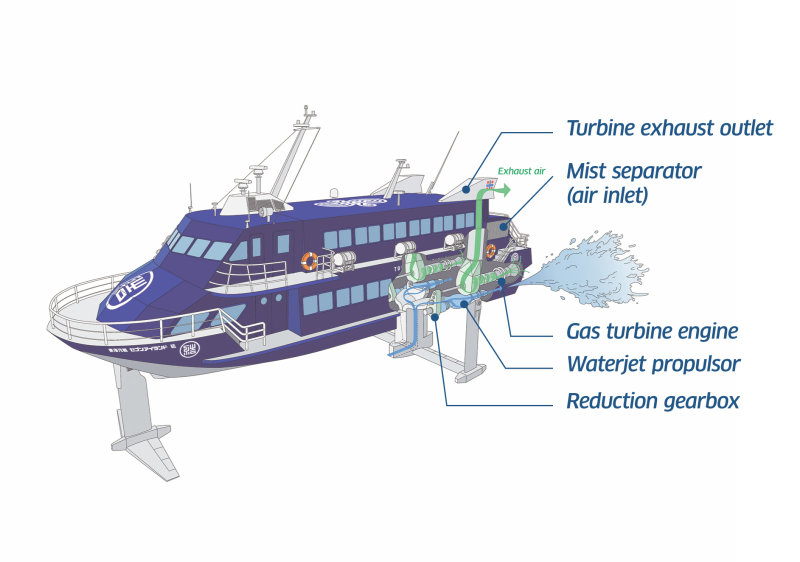
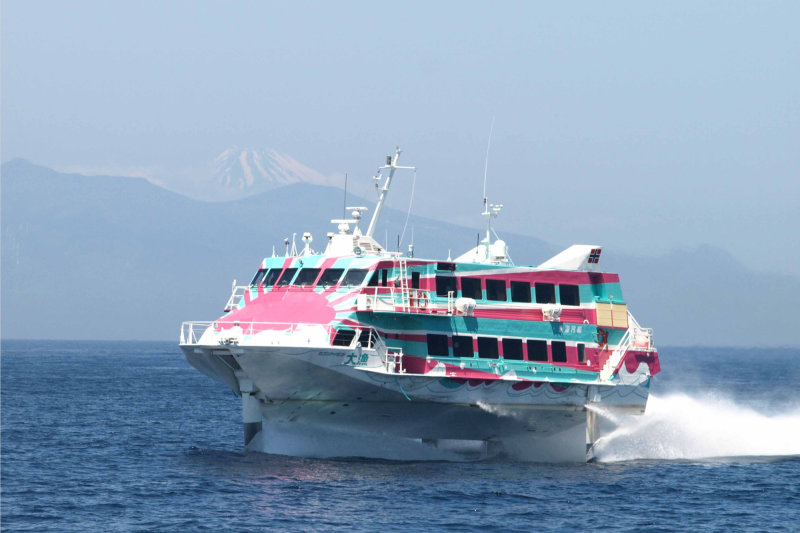
Ability to Discharge the Equivalent of Half a Swimming Pool’s Water in One Minute
The water inlet located at the center of the aft foil draws in and then discharges 180 t of water every minute, which is equivalent to approximately half of a 25 m x 10 m x 1.5 m swimming pool. The highly pressurized nature of the water being drawn in and discharged enables the vessel to reach its top speed of 45 knots (83 km/h) in just three minutes.
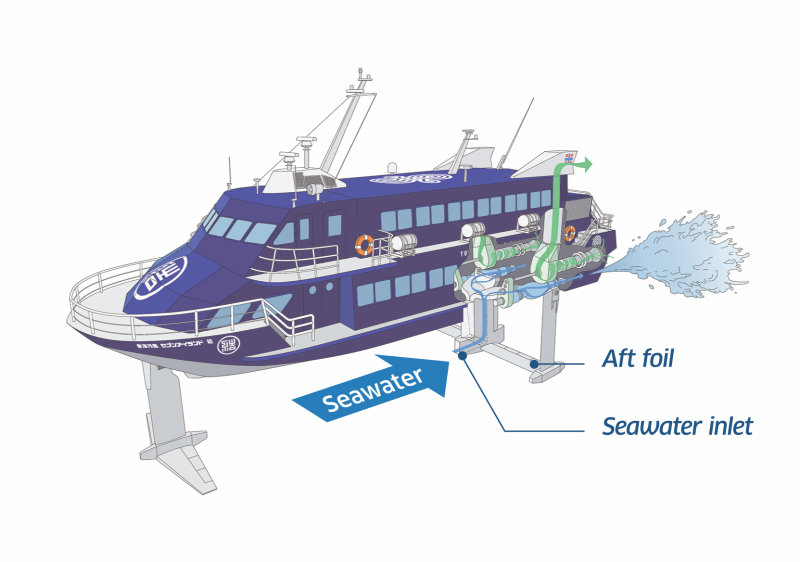
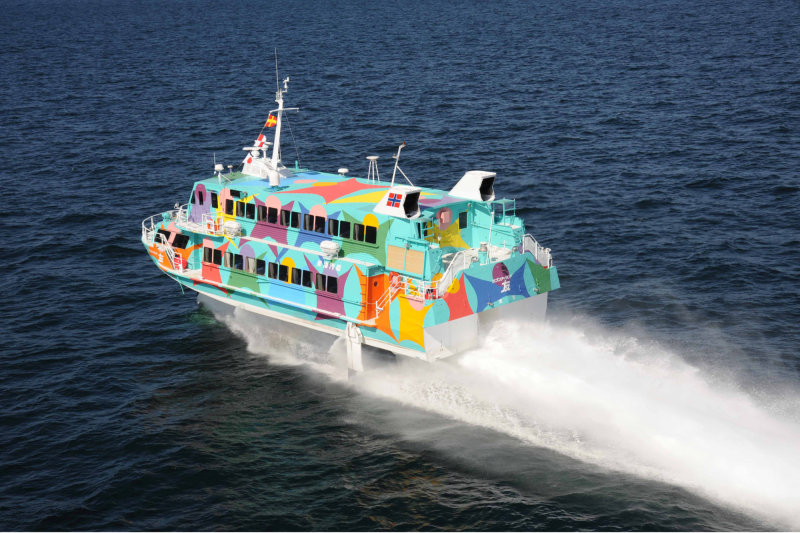
Digitized cockpit
The cockpit is equipped with a cutting-edge digital liquid crystal display (LCD) control panel.
Forward foil
The forward foil has flaps that move vertically and a forward strut that rotates horizontally. Working with the flaps on the aft foil, the forward foil achieves optimal course change. The ship’s captain only needs to operate the helm and the depth control lever.
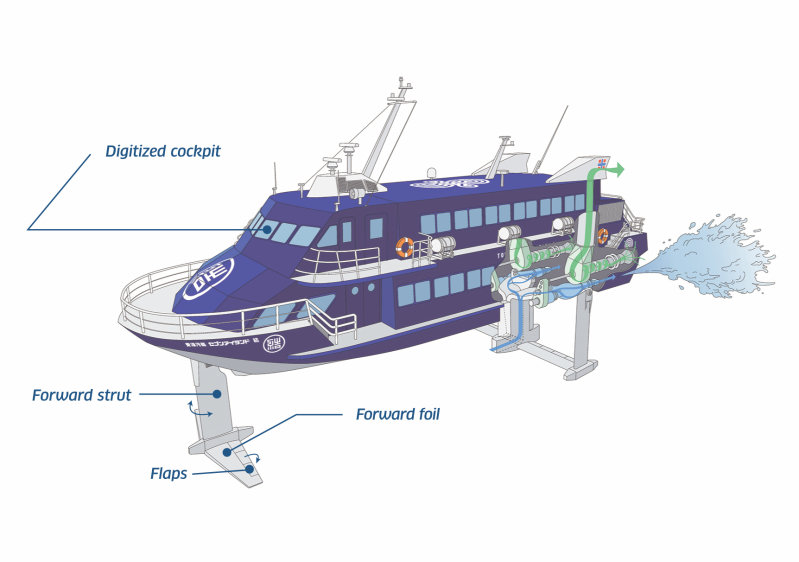
How the Ship “Takes Off”
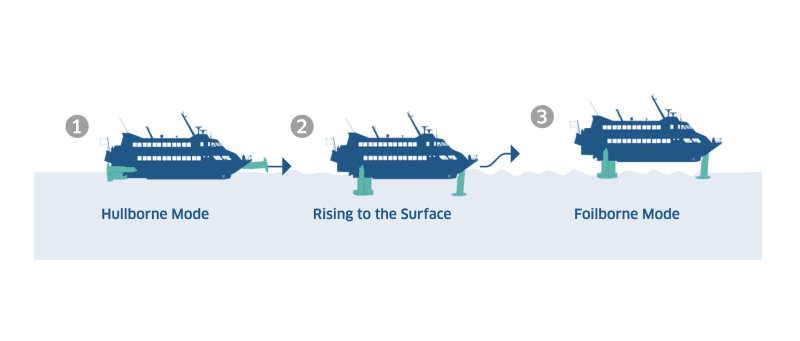
Hullborne Mode
When JETFOIL is in hullborne mode, it sails at around 10 knots (18.5 km/h), and the forward and aft foils are retracted.
Rising to the Surface
By lowering the foils and gaining speed, lift is generated via the foils, making the vessel begin to rise toward the surface at 15 knots, with the hull emerging from the water at 25 knots.
Foilborne Mode
Once clear of the water, at 35 knots, the vessel enters into foilborne operation, which is less subject to the effects of waves. It takes one to two minutes, or 0.9 to 1.8 km, for the ship to reach foilborne mode from hullborne mode, but even when cruising at top speed, the JETFOIL can come to a complete stop within about 100 m.
ACS Realizes a Voyage Free of Seasickness
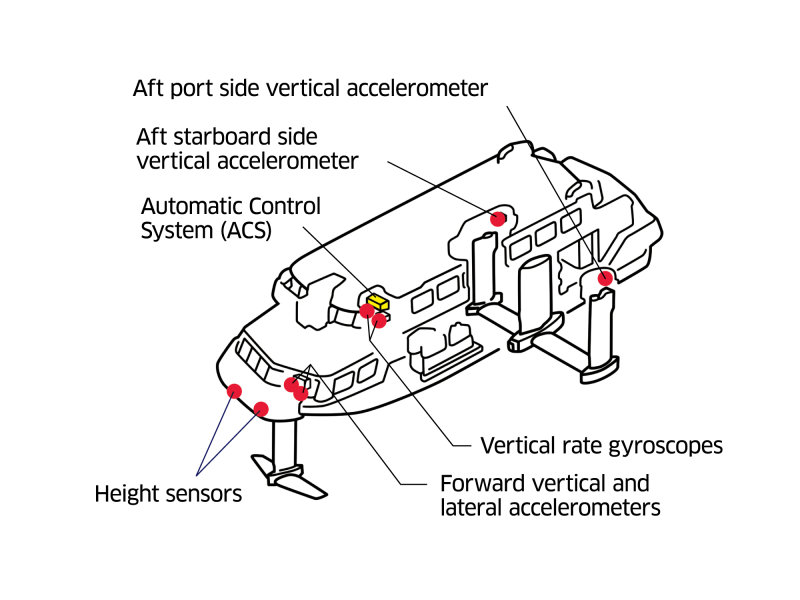
The stable sailing of the JETFOIL, with minimal pitching and rolling, is attributable to eight sensors that detect the ship’s attitude and movements and the ACS (Automatic Control System), which constantly controls pitching, rolling, and other movements, providing passengers with comfortable, seasickness-free travel. When the ship needs to change course, the ACS moves the underwater flaps vertically (up or down) to tilt the ship in the direction of the turn, and at the same time rotates the strut of the forward foil in order to achieve a smooth turn. This action, just as in an airplane, counteracts the centrifugal force created during a turn and keeps passengers from experiencing lateral pressure even when the ship turns at top speed at its turning radius of 220 m.
“Tokyo Island Blue” Used in Design

The exterior of Seven Islands Yui was designed by Asao Tokoro, who created the logos for the Tokyo 2020 Olympic and Paralympic Games. Painted a shade of Prussian blue called “Tokyo Island Blue,” the ship is decorated with its name and logo in white. The colors used in the interior were selected to match the exterior. In addition, the ship provides step-free access so that passengers in wheelchairs can enjoy a comfortable voyage.
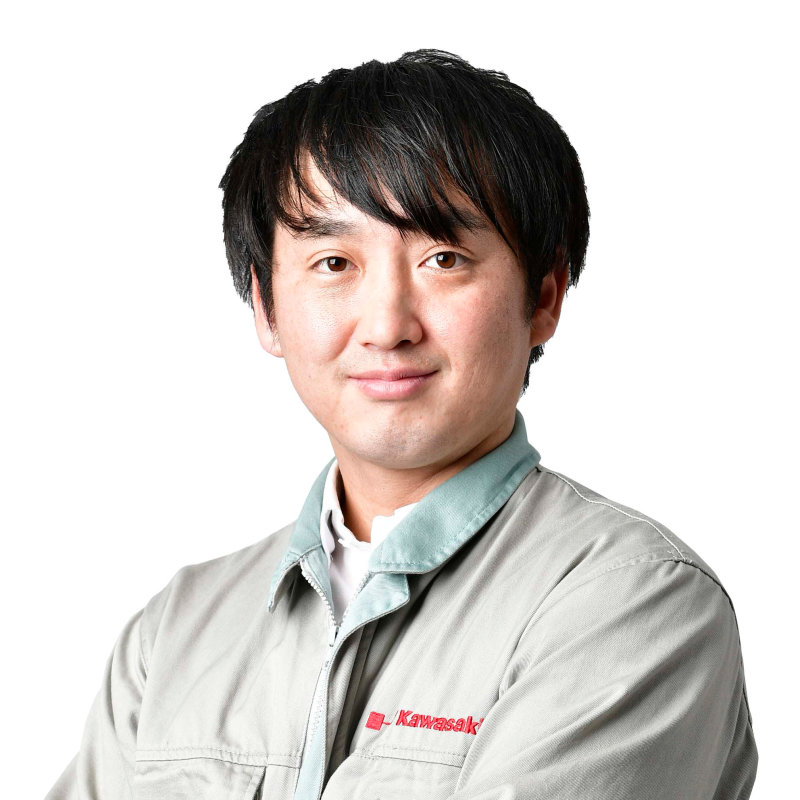
Initial Design Department
Engineering Division
Ship & Offshore Structure Company
Kawasaki Heavy Industries, Ltd.

High-Speed Ship Designing Section
Initial Design Department
Engineering Division
Ship & Offshore Structure Company
Kawasaki Heavy Industries, Ltd.






